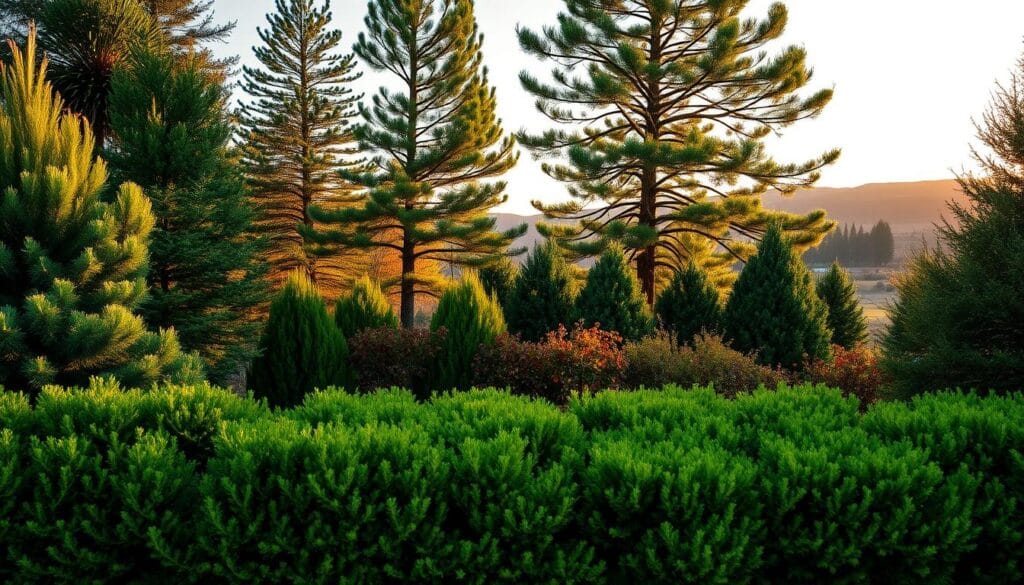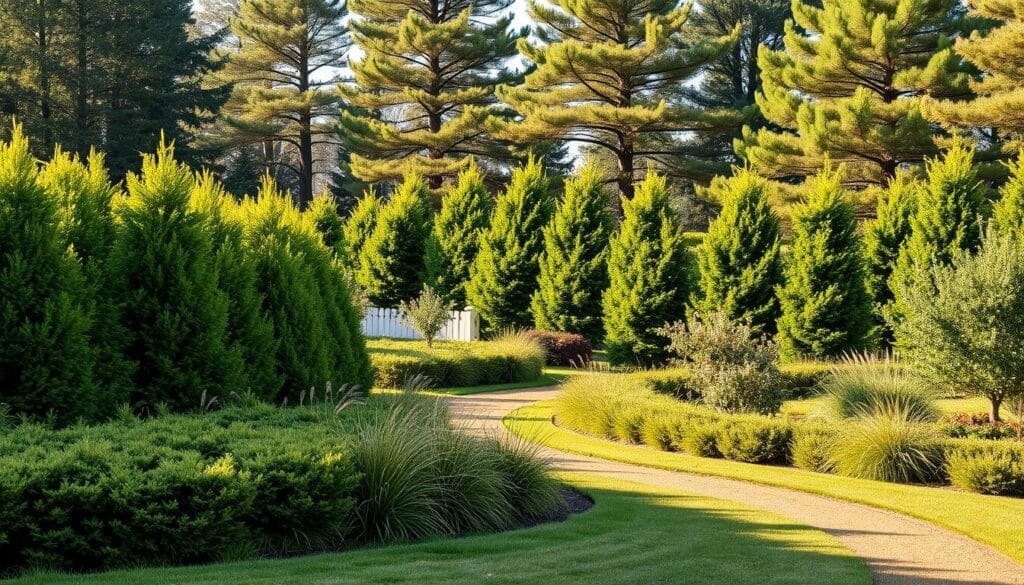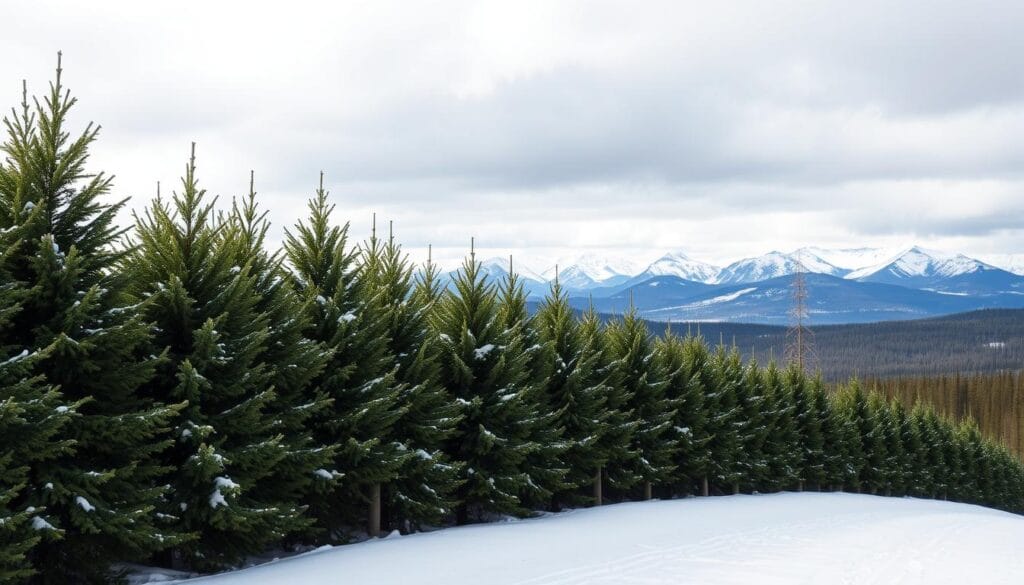Imagine stepping into your backyard on a breezy afternoon, only to feel the wind whip through your hair and scatter patio furniture. For many homeowners and farmers, relentless gusts aren’t just annoying, they’re costly. But what if you could transform your property into a calmer, more productive space? That’s where strategically placed windbreaks, consisting of rows of trees and shrubs, come in.
By planting rows of trees and shrubs, you create natural barriers that tame harsh winds. These living walls do more than shield your home or crops; they improve soil health, trap moisture, and even protect livestock from icy blasts. Studies by the USDA show that farms using these barriers see up to 30% higher yields due to reduced erosion and better snow distribution.
Think of it as a green investment that pays off year-round. In winter, dense evergreens block snowdrifts from burying driveways. Come summer, deciduous species let cooling breezes through while filtering dust. The right mix of plants can lower heating bills, shelter wildlife, and boost property value, all while blending seamlessly into your landscape.
Key Takeaways
- Strategic rows of trees and shrubs reduce wind speed by up to 85%
- Properly designed barriers improve soil moisture and crop health
- Evergreen species excel at controlling snow accumulation near buildings
- Multi-layered plantings offer better wind protection than fences
- Windbreak systems can cut winter heating costs by 15-25%
Understanding the Role and Benefits of Windbreaks
Your crops might be struggling against invisible forces that strip away topsoil. Strategic rows of trees and shrubs act like nature’s shock absorbers, slowing gusts before they reach vulnerable fields. Research shows these living walls reduce wind speed by 50-80%, creating calmer growing conditions for plants.
Guardians of Growth
By breaking wind patterns, natural barriers prevent soil from becoming dehydrated and eroding. This lets roots access nutrients more effectively, boosting crop yields. One USDA study found cornfields near dense plantings produced 22% more bushels per acre compared to exposed areas.
Livestock also benefit dramatically. Thick evergreens shield animals from icy blasts, reducing stress and illness. “Properly designed barriers cut winter mortality rates by 40% in cattle herds,” notes an Iowa State University report.
Beyond the Farmstead
These green walls do double duty. They trap drifting snow evenly across fields, improving spring water distribution. Near homes, they lower heating costs by 20% through wind reduction. Dense species like juniper or spruce create safe havens for birds and pollinators—over 65% of Midwest songbirds nest in windbreak corridors.
Farmers in Minnesota saw a 30% drop in soil loss after installing mixed rows of oak and cedar. Your land gains resilience while supporting local wildlife habitat—a win for productivity and biodiversity.
Planning Your Windbreak: Site, Species, and Density Considerations
Effective wind management begins long before the first sapling touches the soil. Your land’s unique features dictate which natural solutions will thrive. Start by mapping problem areas where gusts damage structures or strip soil, then design barriers to address these pain points.

Evaluating Site Conditions and Optimal Placement
Track wind direction using simple tools: ribbons tied to fence posts or snowdrift patterns. Most plantings work best when placed perpendicular to prevailing winds. For snow control, position barriers 100-150 feet upwind of roads or buildings, roughly 5 times their mature height.
Test soil pH and drainage before choosing species. Sandy soils in Nebraska often support eastern redcedar, while clay-rich areas in Minnesota favor bur oak. The USDA recommends spacing rows 16-20 feet apart on flat terrain to prevent root competition.
Selecting Trees, Shrubs, and Plants for Success
Mix evergreen and deciduous varieties for year-round protection. Colorado blue spruce blocks winter gusts, while chokecherry shrubs provide summer airflow and wildlife habitat. Farmers in North Dakota combine caragana hedges with juniper for layered defense against prairie winds.
Determining Planting Density and Spacing
Follow the 2-2-2 rule for dense barriers: 2 feet between shrubs, 2 yards between trees, and 2 rows minimum. For snow fences, stagger three rows of pines 12 feet apart. “Overcrowding kills more plantings than pests,” warns South Dakota’s extension forestry guide. Leave 30 feet between barriers and buildings to prevent root damage.
Windbreaks: Design and Installation Best Practices
Creating effective natural barriers starts with smart groundwork. Proper preparation ensures your trees and shrubs thrive while maximizing their protective benefits. Farmers in Kansas improved soil water retention by 40% after implementing these methods, according to USDA field trials.

Preparing the Site and Managing Soil Conditions
Clear rocks and invasive weeds first. Test your soil pH—most species prefer 6.0-7.5. Amend clay-heavy areas with compost to improve drainage. Space rows 15-20 feet apart based on mature height to prevent overcrowding.
Step-by-Step Installation Tips for Long-Term Effectiveness
Mark planting lines with stakes and twine. Dig holes twice as wide as root balls. Mix slow-release fertilizer into backfill soil. Plant windward rows with dense evergreens like spruce, then alternate with deciduous plants.
Follow the 2-2-2 spacing rule: 2 feet between shrubs, 2 yards between trees, 2 rows minimum. Iowa farmers reduced snowdrift cleanup costs by 60% using this layout. Mulch around bases to retain moisture and suppress weeds.
Water deeply weekly during the first growing season. Prune dead branches annually to maintain density. A Nebraska study showed that properly spaced rows increased carbon storage by 28% compared to haphazard plantings.
Maximizing Windbreak Effectiveness for Multiple Benefits
Strategic plantings do more than block gusts—they solve multiple challenges at once. When designed thoughtfully, these natural systems become multitasking assets for your land.

Three-in-One Solutions
Living snow fences transform how winter affects your property. Dense rows of spruce or cedar trap drifting snow upwind, spreading it evenly across fields. This prevents dangerous drifts on roads while storing moisture for spring crops. North Dakota farmers reduced snow removal costs by 70% using this method.
Odor control near barns works through physics. Shrubs like lilac break up odor particles as winds push them through leaves. A University of Nebraska study found 50% fewer detectable smells downwind when using double-row plantings.
Crops thrive in the sheltered microclimate that these barriers create. Reduced wind stress lets plants retain 30% more moisture, according to Iowa State trials. Corn yields jumped 18% in fields protected by mixed trees and berry bushes.
Sustaining Performance
Keep your green walls effective with simple care. Trim lower branches annually to maintain airflow. Replace dead plants promptly to prevent gaps. Rotate deep watering between rows during droughts to encourage strong roots.
Mix evergreen and flowering species for layered protection. Eastern redcedar blocks winter winds, while serviceberry feeds pollinators in summer. This diversity strengthens your land’s resilience against changing weather patterns.
Conclusion
Transforming your land into a resilient ecosystem starts with smart planning. By strategically planting rows of trees and shrubs, you create natural shields that protect crops, reduce energy costs, and nurture wildlife. Agroforestry studies prove these systems boost soil water retention by 30-40% while slashing heating bills through wind reduction.
Success hinges on three elements: thoughtful species selection, proper spacing, and consistent care. Evergreens like spruce excel at trapping snowdrifts, while flowering shrubs support pollinators. Farmers report healthier livestock and 18% higher crop yields in sheltered zones.
Your investment grows over time. Well-maintained barriers prevent soil erosion for decades and provide habitats for birds. They also distribute snowmelt evenly, enhancing spring planting conditions.
Ready to start? Consult your local USDA service center or extension office for site-specific guidance. With the right mix of trees and strategic design, you’ll build a landscape that works harder for your property, season after season.
FAQ
How do trees and shrubs protect livestock from wind?
What plants work best for blocking drifting snow?
Can windbreaks improve soil health for crops?
How far apart should you space trees in a windbreak?
Do windbreaks require special soil preparation?
How do living snow fences differ from traditional barriers?
Can windbreaks reduce odors from livestock areas?
What wildlife benefits do these plantings offer?
Staff picks
[6 Pack] Waterproof Solar Security Lights with Motion Sensor and 3 Lighting Modes – Solar-Powered Outdoor Wall Lights for Garden, Fence, Yard, and Deck
Original price was: $34.99.$20.99Current price is: $20.99.10-Pack Waterproof Stainless Steel Solar Stake Lights for Outdoor Use – Cool White Garden Pathway, Yard, Driveway, Patio Decoration
Original price was: $24.99.$21.99Current price is: $21.99.16oz Neem Oil Spray for Plants with Peppermint Oil – Natural Plant Wash for Indoor and Outdoor Use by Smart Grower – Easy Ready-to-Use Formula
$19.952-Pack Inground Worm Composter, Outdoor Worm Compost Bin for Garden Beds & Home Use, Vermicomposting Bin for Beginners (9.5×9.5×10.8Inch)
Original price was: $39.98.$23.89Current price is: $23.89.


![The New Garden Survival Bible: [5 in 1] The Definitive Guide to D...](https://m.media-amazon.com/images/I/51KFUzDjHyL.jpg)



![[6 Pack] Waterproof Solar Security Lights with Motion Sensor and 3 Lighting Modes - Solar-Powered Outdoor Wall Lights for Garden, Fence, Yard, and Deck](https://m.media-amazon.com/images/I/71nkFQJ0cML._SL1500_.jpg)


